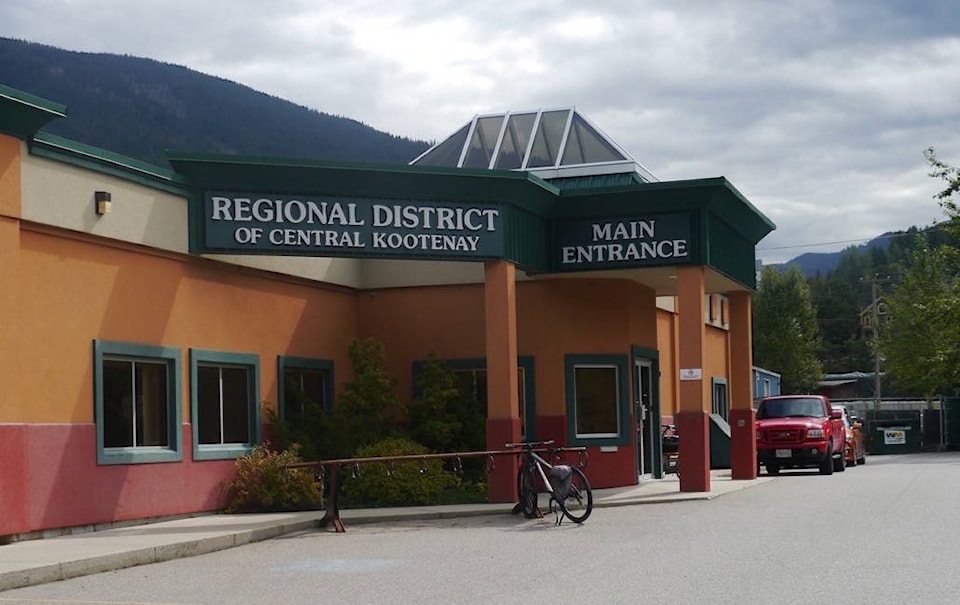The board of directors of the Regional District of the Central Kootenay have told senior levels of government to settle outstanding issues with the Sinixt peoples before giving land around the Arrow Lakes to other First Nations.
Last week the RDCK refused to provide a letter of support to the federal government for a recent transfer of land in Fauquier to reserve status for the Westbank First Nation (WFN).
“The board felt creating a reservation-status property in the traditional territory of the Sinixt was wrong,” says the RDCK director for the area, Paul Peterson, who made the motion. “[It] decided to support the Sinixt in their efforts to be recognized for future treaty negotiations and requested that of the federal government do so.”
The RDCK refusal follows a public meeting in October in Fauquier, held at the RDCK’s request, to seek public comment on the transfer of a 4.6 acre parcel of land on the edge of the Fauquier, which the Westbank First Nation had purchased. The WFN is proposing a land exchange that would give the parcel reserve status, to make up for loss of reserve lands in Kelowna that they had forfeited for repairs to the WAC Bennett Bridge in Kelowna.
http://www.arrowlakesnews.com/news/westbank-officials-address-fauquier-concerns-on-reserve/
The transfer doesn’t need RDCK approval, but the province and federal government had asked for a statement from the board anyway. Instead, Peterson wrote the motion asking the transfer be put on hold.
The motion directed the RDCK staff send a letter “requesting the federal government suspend granting reservation status to first nation communities within the traditional territory of the (Lakes People, Sinixt); AND FURTHER, that the federal government look into the possibility that the declaration that the 3,500 Sinixt people are extinct was indeed an error and that being the case, to start the process to establish what lands are actually Sinixt traditional territory.”
Debate on the motion found near unanimous support among directors.
“The federal government has to change their position on [the extinction]. If there was a stronger way of doing this, I would support that, too,” said director Hans Cunningham.
“It’s very important for us to come together as a regional government to endorse the fact that this issue needs to be settled once and for all,” said Larry Binks, who sits as the RDCK representative on local land claims processes. “The Sinixt sitting here listening [in the public gallery] are not even listed as official representatives in the land claims process.
“Our role as I see it is to support them to become recognized as people of Canada,” he added. “We need to support their return to society as recognized.”
RDCK Chair Karen Hamling expressed some concern the board motion not offend other first nations with claims to the territory in question, but also voted for it.
“They wanted to tell us what we had to do,” said Peterson, who added he’s proud of his fellow board members for not amending his original motion. “They’re asking us to support something we weren’t ready to support, and we gave them an explanation why not.”
The motion pleased members of the Sinixt who attended the board meeting last Thursday.
“An official government body took the next step today,” said Sinixt representative Shelly Boyd after the meeting. “We know this extinction isn’t true. We need to keep following that thread of truth.”
The Sinixt declared extinct in Canada in 1956, have no rights under the Indian Act and cannot participate in any government discussions on land claims. Earlier this year the tribe’s aboriginal right to hunt in the area was reinstated by a judge in Nelson, who said the Sinixt had a legitimate historic presence in the territory, which stretches from Kettle Falls, Washington, to Revelstoke.
The Westbank First Nation did not respond to a request for comment. The band’s plans for the Fauquier site include a 10-site campground for WFN private use. The WFN and other members of the Okanagan Nation Alliance have completed several similar land transfers in the Okanagan, but this was their first request to do so for lands in the Arrow Lakes, an area that they say is part of their ancestral territory.
Peterson said he didn’t know what the next step would be but didn’t think the RDCK motion would sour relations with the WFN.
“Not at all. We all anticipate Westbank are going to be model citizens and very good people,” he said. “This is not about Westbank at all.”
He said the basis of the motion was the history of the treatment of First Nations in Canada- and especially the Sinixt extinction.
“First Nations in B.C. have had genocide put on them, there’ve been murders, they’ve been hung,” he said. “The government went one step further with the Sinixt by declaring them extinct.
“Should we be part of that or should we stand our ground regardless if it’s going to create a little bump in the road in the future?”
With notes from Eileen Delehanty Pearkes
